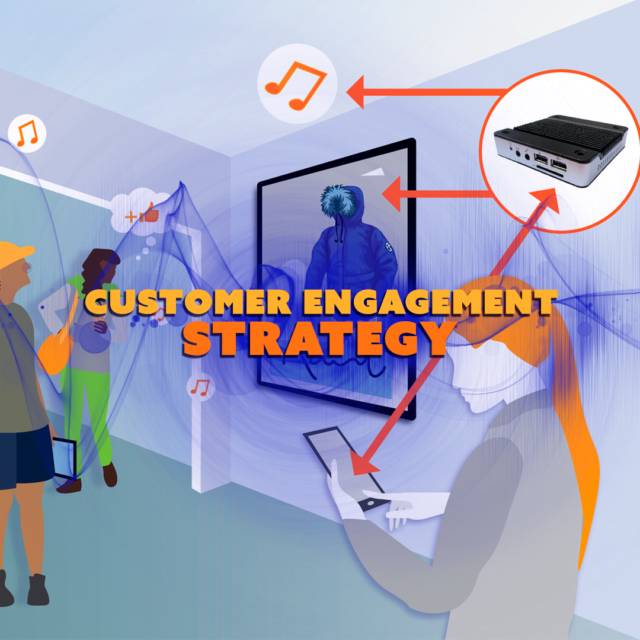CUBE OS is the world’s most advanced system for remote management:
It’s been engineered specifically for forward-looking service providers who must remotely manage and maintain the network-connected equipment and appliances they’ve installed at their customer’s premises. Network-connected equipment is not just the way of the future: it’s here already, its’s expected, and it’s pervasive.

Today’s service providers face a major challenge, though: a tremendous variation in the networking environments they find at their customers.
For service providers that should be focusing on their core business offerings (such as delivering business music or messaging), networking can quickly turn into a lethal distraction. Every customer’s network is different – in architecture, access policy, and overall philosophy – and increasingly, customers’ ISPs are interfering with communications in unexpected ways: sometimes because of misconfigurations, increasingly because of opportunism (eg advertisement injection), or because the ISP or geography imposes communication constraints such as data transfer caps or restrictions.
CUBE OS can be ported to other hardware platforms.
CUBE OS is based on the linux kernel and open standards, and is compatible with the widest range of hardware. CUBE OS is completely portable, running on everything from CUBE 335MX hardware, to PCs and Raspberry PIs, to completely custom hardware. Since CUBE OS has been specifically engineered with small-footprint embedded flash-based devices in mind, is is substantially more reliable on these kind of devices (like Raspberry PI, STBs and so forth) than any other approach.
No Shortcuts with CUBE OS.
Sometimes we run into service providers or manufacturers who’ve tried to build their own on-hold or in-store players, who buy in existing hardware such as FitPC or Raspberry PI. They hold to the mistaken belief that their bought-in hardware will remain consistent and that they could get away with what amounts to a lazy “least effort” operating system on their part: slapping together something themselves, or abusing an arbitrary linux distribution. Invariably, they do not realize (until it’s too late) that such devices are moving targets and that the engineering of a complete Operating System Environment for them is a highly specialized and hard-to-find skill: not just to ensure reliable operations for flash-based hardware, but also for dealing with the deluge of different networking environments encountered in the real world, and to provide secure and reliable capabilities such as firmware updating, app delivery or content updating in all those environments. Almost uniformly, within a relatively short period of time, these companies start facing severe technical difficulties with their product: they cannot match the breadth of diagnostic capabilities already built into CUBE OS, but get sucked progressively deeper into a downward spiral, trying to put out fires in the field with inadequate tools. We’ve never seen it end well for such companies.
Other companies may try to avoid considering the OS altogether, by adopting Android as the hardware “OS” and by then writing or using Apps on Android-based hardware. This is somewhat reminiscent of how an ostrich ignores reality by sticking its head in the sand. Such companies have little to no control over Android’s agenda. For one thing, Android is designed primarily for use by consumers on consumer devices. It doesn’t actually provide any proper tools for service providers who must perform real-world remote management and diagnostics of devices behind diverse network connections. And it doesn’t help that Android’s engineering emphasis on consumer requirements (such as long battery life) often end up getting in the way of functionality that is materially important to remote-managing service providers. For another, Android (unlike hype would have it) is not an open system: the vast majority of Android hardware actually requires proprietary versions of Android OS, which are all different and ’non-standard’ to varying degrees to contain the hardware-specific components. These Android versions can be extremely buggy, or have crippled functionality, and there is absolutely no incentive (nor not much of a mechanism) for the device manufacturers to release any updates to fix the problems that invariably arise, nor to get those deployed to remote units already in the field. This is fragmentation in the worst possible sense.
Since CUBE OS is portable to the majority of these devices, and is fully certified and qualified end-to-end by ESI on each supported device, CUBE OS is completely consistent across all devices with no such fragmentation issues.
Sensible organizations pick the right tool for the job. You wouldn’t use a hammer to put out a fire, nor a garden hose to drive in a nail. So why use a B2C system for B2B deployments? The right tool for the job is CUBE OS: battle-proven in 40 countries to provide the best connectivity, the best remote management and diagnostic tools, and the utmost in reliability for flash-based B2B embedded systems.




